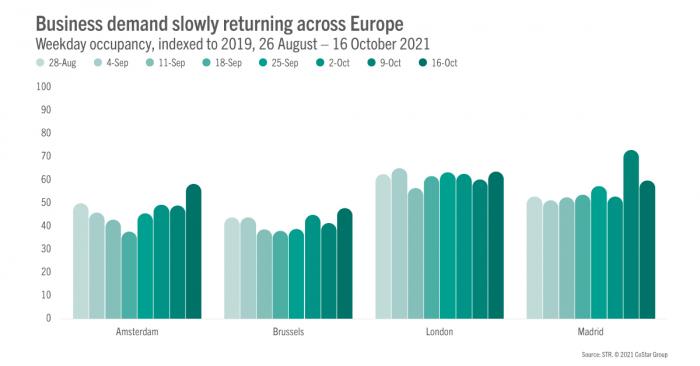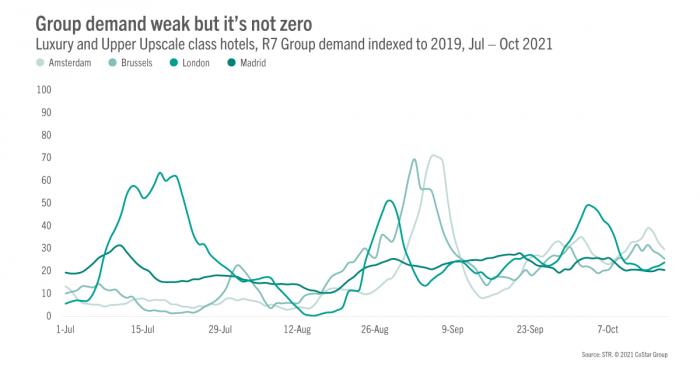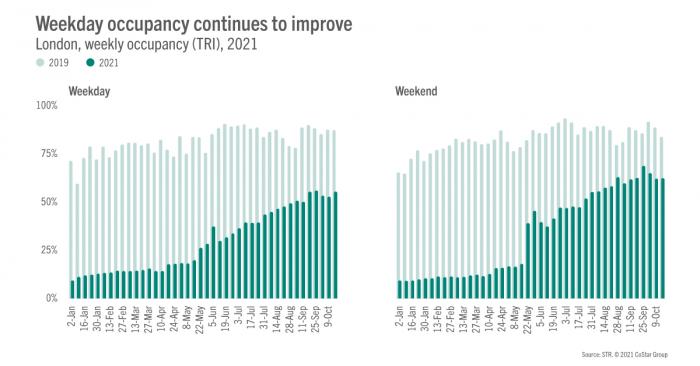Undoubtably, leisure travel has created the most cause for celebration since recovery began from the global pandemic. However, to reach the next phase of performance recovery, the hotel industry needs business travel and groups to return in a big way. There have been early signs of that return in the U.S., and fortunately, the latest data for Europe indicates a similar return may be on the way. In-person conferences and events are slowly taking place across Europe as international restrictions continue to ease, such as the long-awaited end to the U.K. amber list on 4 October.
In-person life is back, or is it?
As in-person conferences and events slowly take place across Europe, weekday occupancy indexes in four of Europe’s key business markets are closing in on 50% of pre-pandemic occupancy levels. Most notably in Madrid, weekday occupancy was 73% of the comparable 2019 level in early October.
For comparison, Brussels’ 48% weekday occupancy for the week ending with 16 October was its highest since the last week of August.


